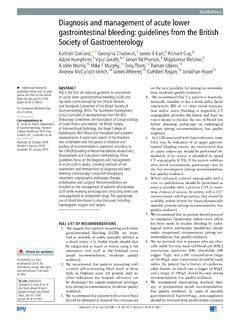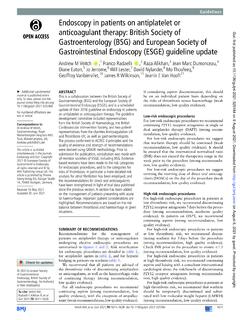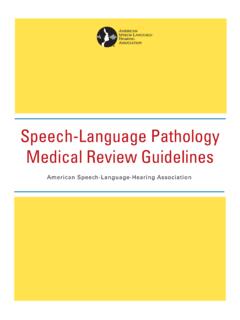Transcription of Guidelines British Society of Gastroenterology guidelines ...
1 1 Trudgill NJ, et al. Gut 2019;66:1 20. Society of Gastroenterology Guidelines for oesophageal manometry and oesophageal reflux monitoringNigel J Trudgill, 1 Daniel Sifrim,2 Rami Sweis,3 Mark Fullard,4 Kumar Basu,5 Mimi McCord,6 Michael Booth,7 John Hayman,8 Guy Boeckxstaens,9 Brian T Johnston,10 Nicola Ager,8 John De Caestecker11To cite: Trudgill NJ, Sifrim D, Sweis R, et al. Gut 2019;66:1 and West Birmingham Hospitals NHS Trust, West Bomwich, UK2 Centre of Gastroenterology Research, Queen Mary University London, London, UK3 University College London Hospitals NHS Foundation Trust, London, UK4 West Hertfordshire Hospitals NHS Trust, Watford, Hertfordshire, UK5 Sheffield Teaching Hospitals NHS Foundation Trust, Sheffield, UK6 Heartburn Cancer UK, Baingstoke, UK7 Royal Berkshire NHS Foundation Trust, Reading, UK8 Sandwell and West Birmingham Hospitals NHS Trust, West Bromwich, UK9 Gastroenterology , University Hospital, KU Leuven, Leuven, Belgium10 Department of Gastroenterology , Belfast Health and Social Care Trust, Belfast, UK11 University Hospitals of Leicester NHS Trust, Leicester, UKCorrespondence toDr Nigel J Trudgill; nigel.
2 Trudgill@ nhs. netReceived 14 December 2018 Revised 13 June 2019 Accepted 16 June 2019 Author(s) (or their employer(s)) 2019. Re-use permitted under CC BY-NC. No commercial re-use. See rights and permissions. Published by Guidelines on oesophageal manometry and gastro-oesophageal reflux monitoring supersede those produced in 2006. Since 2006 there have been significant technological advances, in particular, the development of high resolution manometry (HRM) and oesophageal impedance monitoring. The Guidelines were developed by a guideline development group of patients and representatives of all the relevant professional groups using the Appraisal of Guidelines for Research and Evaluation (AGREE II) tool. A systematic literature search was performed and the GRADE (Grading of Recommendations Assessment, Development and Evaluation) tool was used to evaluate the quality of evidence and decide on the strength of the recommendations made.
3 Key strong recommendations are made regarding the benefit of: (i) HRM over standard manometry in the investigation of dysphagia and, in particular, in characterising achalasia, (ii) adjunctive testing with larger volumes of water or solids during HRM, (iii) oesophageal manometry prior to antireflux surgery, (iv) pH/impedance monitoring in patients with reflux symptoms not responding to high dose proton pump inhibitors and (v) pH monitoring in all patients with reflux symptoms responsive to proton pump inhibitors in whom surgery is planned, but combined pH/impedance monitoring in those not responsive to proton pump inhibitors in whom surgery is planned. This work has been endorsed by the Clinical Services and standards Committee of the British Society of Gastroenterology (BSG) under the auspices of the oesophageal section of the of All reCommendATions1.
4 Oesophageal manometry, including high resolution manometryTechnical aspects of oesophageal In patients undergoing evaluation for dysphagia , high resolution manometry (HRM) is superior to standard manometry in terms of reproducibility, speed of performance and ease of interpretationGRADE evidence: HighStrength recommendation: The addition of impedance to HRM can be a helpful adjunct to visualise bolus movement and peristalsis effectiveness; however, its utility in clinical practice and impact on therapeutic deci-sion making is not yet evidence: ModerateStrength recommendation: Normal values for HRM are manufacturer and catheter evidence: HighStrength recommendation: Adjunctive testing (eg, larger volumes of water, solid/viscous swallows or a test meal) can provide additional information and unmask pathology not seen with standard water swallows, as they are more representative of normal swallowing behaviour and more likely to induce symptoms and, in turn, improve diagnostic evidence: HighStrength recommendation: StrongPatients with Patients with dysphagia should preferably have an endoscopy with oesophageal biopsies to rule out and treat mucosal and structural disor-ders prior to manometry.
5 Barium swallow should be considered where endoscopy is not possible and/or where structural disorders require further evidence: ModerateStrength recommendation: StrongPatients with In patients with achalasia, HRM provides infor-mation on achalasia subtype which is predictive of clinical outcome. Although also possible, subtyping achalasia with standard manometry requires evidence: ModerateStrength recommendation: StrongPatients with major motility disorders other than achalasia (diffuse oesophageal spasm, hypercontractile oesophagus, absent peristalsis) Among patients with major motility disorders other than achalasia (diffuse oesophageal spasm, hypercontractile oesophagus, absent peristalsis), HRM, compared with standard manometry, may provide increased diagnostic and functional infor-mation changing evidence: ModerateStrength recommendation: Conditional/weak2 Trudgill NJ, et al.
6 Gut 2019;66:1 20. undergoing catheter based reflux Oesophageal manometry is the preferred method by which to localise the lower oesophageal sphincter (LOS) prior to cath-eter based pH sensor evidence: ModerateStrength recommendation: StrongPatients prior to antireflux Although there is currently no evidence to rule out or tailor antireflux surgery in patients with minor motor disorders, oesophageal manometry should be performed in advance of all patients being considered for surgery to rule out LOS dysfunc-tion (ie, achalasia), as well as major motor disorders of the oesophageal body (eg, diffuse oesophageal spasm).GRADE evidence: HighStrength recommendation: StrongSymptomatic patients after antireflux HRM can provide useful diagnostic information not obtain-able by standard manometry, among patients with dysphagia after antireflux evidence: LowStrength recommendation: Conditional/weakPatients with suspected Rumination syndrome can be confidently diagnosed clin-ically on the basis of a typical history, but if the diagnosis is unclear, the patient needs convincing of the diagnosis or objec-tive evidence is required prior to therapy, HRM with impedance after a test meal can be utilised to identify diagnostic features.
7 Simultaneous impedance provides additional confirmatory and diagnostic evidence: ModerateStrength recommendation: Strong2. Catheter based oesophageal reflux monitoring, including pH and impedance monitoringTechnical aspects of reflux Automatic analysis of oesophageal pH recordings and symptom association with acid reflux episodes is adequate for pH monitoring in patients, provided the recording is checked for artefacts and major technical issues and that times of meals and symptoms have been accurately evidence: LowStrength recommendation: Analysis of oesophageal pH/impedance recordings requires manual editing of reflux episodes and symptoms, to obtain accurate reflux quantification and reflux symptom association evidence: ModerateStrength recommendation: To enhance the chance of establishing a diagnosis of gastro-oesophageal reflux disease and a symptom association with acid reflux, patients undergoing pH monitoring should not take acid evidence: ModerateStrength recommendation: In patients with heartburn or acid regurgitation symptoms not responding to a proton pump inhibitor twice daily, if pH/impedance monitoring is required it should be undertaken on proton pump inhibitors if the patient has previous pathological endoscopic or pH monitoring findings, and the study should be performed off proton pump inhibitors if they have no previous such demonstration of pathological gastro-oesophageal reflux evidence: LowStrength recommendation.
8 In patients with heartburn, acid regurgitation or chest pain, symptom association with reflux episodes is best assessed with both the symptom association probability and symptom evidence: LowStrength recommendation: In patients with throat or respiratory symptoms, dual probe distal oesophageal and proximal oesophageal or pharyngeal pH monitoring has no advantage over single probe distal oesopha-geal pH evidence: LowStrength recommendation: Conditional/weakPatients with symptoms suspected to be due to gastro-oesophageal reflux Patients with symptoms suspected to be due to gastro-oe-sophageal reflux disease should undergo a therapeutic trial of a proton pump inhibitor as the initial diagnostic evidence: ModerateStrength recommendation: Reflux monitoring with pH or pH/impedance is not recom-mended in patients with gastro-oesophageal reflux disease symp-toms responsive to proton pump inhibitor therapy in whom antireflux surgery is not evidence: ModerateStrength recommendation: In patients with heartburn or regurgitation not responding to twice daily proton pump inhibitors, reflux monitoring should be performed with pH/impedance monitoring.
9 This technique allows diagnosis of increased acid exposure, association between symptoms and acid or non-acid reflux, and identification of phenotypes ie, non-erosive reflux disease, hypersensitive oesophagus and functional evidence: ModerateStrength recommendation: In patients with chest pain, throat or respiratory symptoms suspected to be due to gastro-oesophageal reflux disease but not responding to twice daily proton pump inhibitors, we recommend performing reflux monitoring with pH/impedance, as this enables the diagnosis of pathological gastro-oesophageal reflux and/or an association between symptoms and acid or non-acid evidence: LowStrength recommendation: StrongPatients with idiopathic pulmonary fibrosis, cystic fibrosis and lung transplantation with suspected gastro-oesophageal reflux Patients with idiopathic pulmonary fibrosis, cystic fibrosis or other pulmonary disorders that might require lung transplan-tation should have reflux monitoring with pH/impedance to detect pathological acid or non-acid gastro-oesophageal reflux prior to intensive proton pump inhibitor treatment or antireflux evidence: LowStrength recommendation: Conditional/weakPatients with symptoms suspected to be due to gastro-oesophageal reflux disease and antireflux surgery Patients with symptoms suspected to be due to gastro-oe-sophageal reflux disease and responsive to a proton pump inhib-itor should undergo oesophageal pH monitoring, rather than 3 Trudgill NJ, et al.
10 Gut 2019;66:1 20. , before antireflux surgery, to confirm excess oesophageal acid exposure and/or an association between symp-toms and acid reflux evidence: ModerateStrength recommendation: Patients with heartburn or acid regurgitation, chest pain, throat or respiratory symptoms not responsive to a proton pump inhibitor should undergo oesophageal pH/impedance monitoring, rather than pH monitoring alone, before antireflux surgery, to confirm excess oesophageal acid exposure and/or an association between symptoms and acid or non-acid reflux evidence: LowStrength recommendation: StrongPatients with recurrent or persistent gastro-oesophageal reflux symptoms following antireflux Patients with recurrent or persistent gastro-oesophageal reflux symptoms following antireflux surgery should undergo reflux monitoring by pH/impedance, rather than pH moni-toring alone, as this can objectively confirm or reject persistent gastro-oesophageal reflux and exclude other causes for symp-toms such as supragastric evidence: LowStrength recommendation: Conditional/weak3.











